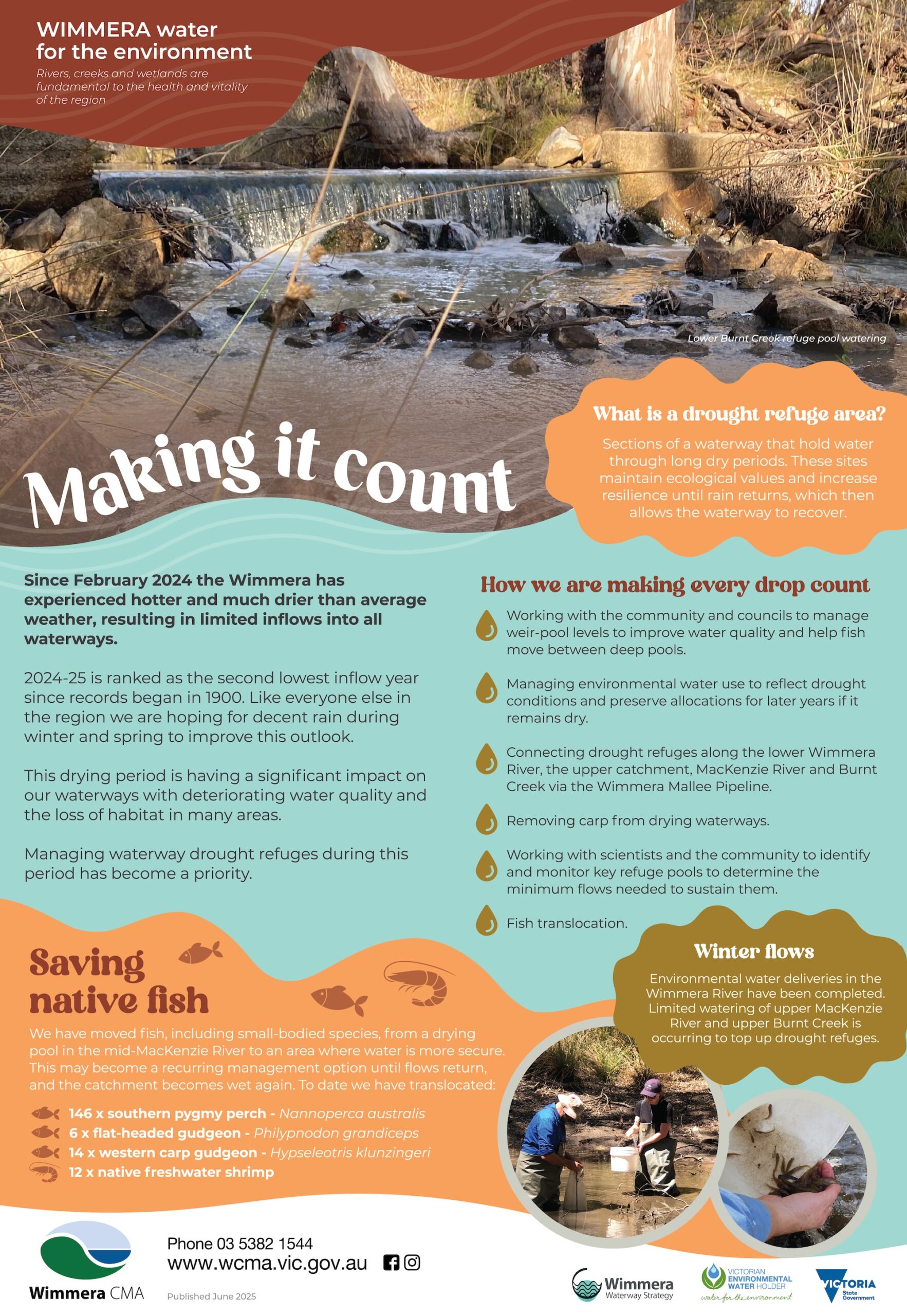Winter Water for Environment update
Since February 2024 the Wimmera has experienced hotter and much drier than average weather, resulting in limited inflows into all waterways.
2024-25 is ranked as the second lowest inflow year since records began in 1900. Like everyone else in the region we are hoping for decent rain during winter and spring to improve this outlook.
This drying period is having a significant impact on our waterways with deteriorating water quality and the loss of habitat in many areas.
Managing waterway drought refuges during this period has become a priority.
What is a drought refuge area?
Sections of a waterway that hold water through long dry periods. These sites maintain ecological values and increase resilience until rain returns, which then allows the waterway to recover.
How we are making every drop count
- Working with the community and councils to manage weir-pool levels to improve water quality and help fish move between deep pools.
- Managing environmental water use to reflect drought conditions and preserve allocations for later years if it remains dry.
- Connecting drought refuges along the lower Wimmera River, the upper catchment, MacKenzie River and Burnt Creek via the Wimmera Mallee Pipeline.
- Removing carp from drying waterways.
- Working with scientists and the community to identify and monitor key refuge pools to determine the minimum flows needed to sustain them.
- Fish translocation.
Saving native fish
We have moved fish, including small-bodied species, from a drying pool in the mid-MacKenzie River to an area where water is more secure. This may become a recurring management option until flows return, and the catchment becomes wet again. To date we have translocated:
- 146 southern pygmy perch – Nannoperca australis,
- 6 x flat-headed gudgeon – Philypnodon grandiceps,
- 14 x western carp gudgeon – Hypseleotris klunzingeri,
- 12 x native freshwater shrimp.





